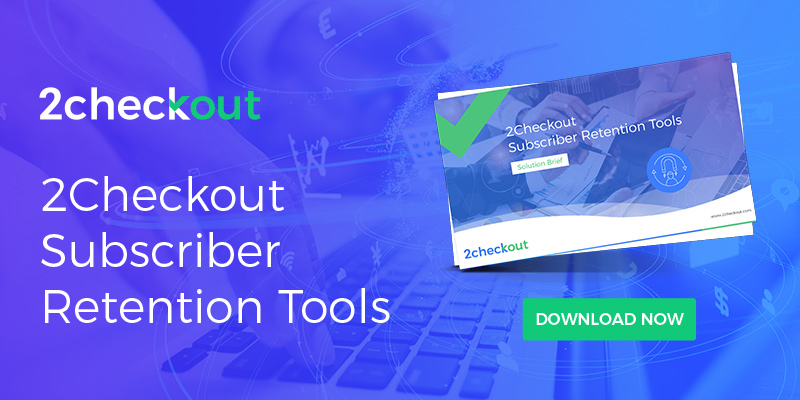Have you ever noticed a customer who used to be a regular suddenly stop using your product or service? That’s customer churn, and it’s a critical metric for any business to track. In simple terms, customer churn refers to the rate at which your customers stop doing business with you. It can happen for a variety of reasons, such as dissatisfaction with your product, finding a better deal with a competitor, or simply losing interest.
While losing a customer here and there is inevitable, a high churn rate can significantly impact your bottom line. The good news is that by identifying customers at risk of churn early, you can take steps to win them back and build stronger relationships. This blog post will explore the key signs that indicate a customer might churn, and how you can use this valuable information to improve customer retention and fuel your business growth.
Understanding Customer Churn (Attrition)
Customer churn, also known as customer attrition, refers to the loss of paying customers over a specific period. Imagine a leaky bucket – you’re constantly adding new customers (water) at the top, but if existing customers churn (leak out) at a faster rate, your overall customer base (water level) will decline. This can have a significant impact on your business health.
Here’s why monitoring churn rates is crucial:
- Financial Impact: Churn directly affects your revenue stream. Losing customers means losing recurring income and potential for future growth. Studies show acquiring new customers can cost 5-10 times more than retaining existing ones. Focusing on retention is a more cost-effective way to grow your business.
- Customer Lifetime Value (CLTV): Loyal customers are more valuable in the long run. They tend to make repeat purchases, refer your business to others, and provide valuable feedback for improvement. High churn rates disrupt this cycle and hinder your ability to build long-term customer relationships.
- Predictive Power: Churn rate is a leading indicator of future business health. By tracking churn, you can identify potential problems early on and take corrective action before they escalate. This proactive approach can save you money and ensure the sustainable growth of your business.
In short, keeping a close eye on customer churn allows you to identify areas for improvement, optimize your customer experience, and ultimately build a more sustainable and profitable business.
Signs of Customer Churn Risk
Low Net Promoter Score (NPS)
One of the clearest indicators that your customers might be on the verge of churning is a low Net Promoter Score (NPS). Let’s break down why this matters.
NPS: A Window into Customer Loyalty
NPS is a metric that quantifies customer satisfaction and loyalty. It asks customers how likely they are to recommend your product or service to others on a scale of 1 (not at all likely) to 10 (extremely likely). Customers are then categorized into three groups:
- Promoters (Score 9-10): These are your loyal fans, likely to continue using your product and recommend it to others.
- Passives (Score 7-8): These are neutral customers, satisfied but not particularly enthusiastic. They could be swayed by a competitor.
- Detractors (Score 0-6): These are unhappy customers who could damage your reputation with negative word-of-mouth.
A low NPS score (dominated by Detractors and lacking Promoters) suggests a high proportion of dissatisfied customers. These unhappy customers are less likely to renew their subscriptions, repurchase, or recommend your product. They might even leave negative reviews, deterring potential new customers.
Support Tickets Tell a Story
Another indicator of potential churn is a rise in support tickets or inquiries, especially those carrying negative sentiment. This can signal:
- Increased Product Issues: A surge in support tickets could mean customers are encountering more problems with your product, leading to frustration and potentially driving them away.
- Unmet Needs: Negative customer inquiries might expose unmet needs or areas where your product falls short. Customers who feel unheard or unsupported are more likely to churn.
By closely monitoring support interactions and sentiment, you can identify problem areas and proactively address customer concerns before they escalate into churn.

Lowered Product Usage and Activity
Customer churn isn’t always as clear-cut as a cancelled subscription or angry email. Sometimes, a more subtle sign emerges: lowered product usage and activity. While the customer might not be explicitly voicing their dissatisfaction, their dwindling engagement speaks volumes.
Why Less Activity Matters
Think of it this way: customers who find value in your product will naturally use it regularly. If their usage drops significantly, it suggests they’re either not getting the desired results or have found an alternative solution. Here’s how specific usage patterns can indicate churn risk:
- Decreased Logins: Fewer logins suggest a decline in overall engagement. Are customers logging in less frequently, or not at all? This could be a sign they’re no longer finding the product useful.
- Feature Neglect: Pay attention to how customers interact with specific features. Is there a core feature they used to rely on but now avoid? This could indicate they’ve found a workaround elsewhere or simply don’t see the value in that feature anymore.
- Purchase Slump: For eCommerce businesses, a drop in purchase frequency can be a red flag. Are customers buying less frequently, or have their purchases stopped altogether? This might suggest they’ve found a better deal elsewhere or simply don’t need your product as much anymore.
- Onboarding Blues: Customers who struggle to complete the onboarding process, or who don’t utilize key features after onboarding, are at higher risk of churn. This indicates they might be facing difficulties understanding the product’s value proposition or encountering usability issues.
There’s a reason why businesses track user activity metrics. A decline can be an early warning sign of customer dissatisfaction. They might not be vocal about their concerns, but their actions speak volumes. By identifying these trends, you can intervene before it’s too late.
Losing an Advocate
Not all churn signals come from individual customers. Sometimes, it’s the internal dynamics within a client organization that can put your business at risk. Let’s explore the potential impact of losing a champion within your customer’s company.
Who are Champions?
Champions are internal advocates within your client’s organization. They are the people who understand your product’s value, believe in its benefits, and actively promote it to their colleagues. They can be instrumental in driving adoption, securing budget approvals, and influencing internal decision-making in your favor.
When a champion leaves, departs your industry, or loses influence within their company, it can create a ripple effect that puts your business at risk. Here’s how:
- Knowledge Gap and Lost Momentum: Champions often possess deep institutional knowledge about your product and its implementation. Their departure can create a knowledge gap, leaving your remaining contacts unsure about how to best utilize your offering. This can stall progress and hinder adoption.
- Erosion of Trust and Influence: Champions build trust and credibility for your business within their organization. Their absence can create an opening for competitors or internal resistance to your product. Without a strong internal advocate, your value proposition might not be effectively communicated, leading to a potential switch to alternatives.
- Shifting Priorities and Decision-Making: The champion might have been a key decision-maker or influencer regarding your product’s continued use. Their departure can lead to a shift in priorities within the client organization. New decision-makers might not be as familiar with your product or convinced of its value, increasing the churn risk.
By nurturing these champions, you can secure long-term partnerships and minimize the risk of churn triggered by internal dynamics. Remember, a champion’s voice can be a powerful force for customer retention.
Absence Speaks Volumes About Churn
Don’t be fooled by the quiet! We often focus on vocal negativity, but a hidden danger zone exists: disengaged passives. These customers are like silent shadows. They don’t complain, but they also don’t engage with surveys, support, or your product itself. This lack of noise can be a red flag.
Why? Disinterest breeds disengagement. Customers who aren’t actively using your offering are less invested in its success. When a competitor pops up with something exciting, these passive customers might silently switch. Even worse, their silence hides their needs. They might not tell you what’s wrong, but they’ll silently search for alternatives or simply let their subscription lapse. This makes it hard to fix problems before they lead to churn.
There are subtle clues that can help you identify customers exhibiting the “absence of signal”:
- Non-Responsive to Outreach: Do they consistently ignore surveys, emails, or other attempts at communication?
- Contract Renewal Neglect: Are they nearing the end of their contract term without any discussion about renewal? This could indicate they’re exploring other options.
- Competitor Curiosity: Are they attending webinars or downloading content from your competitors? This could be a sign they’re considering a switch.
By being attentive to the subtle signs of disengagement, you can identify potential churn risks before it’s too late. Remember, a silent customer doesn’t necessarily mean a happy customer.
Outsmart Churn: Strategies to Predict and Prevent Customer Loss
While identifying the signs of churn is crucial, wouldn’t it be even better to predict it before it happens? Enter churn prediction models. These are powerful tools that leverage the power of machine learning to analyze historical customer data and identify patterns that signal a high risk of churn.
Here’s how it works:
- Data is King: Churn prediction models rely on a rich dataset that includes customer demographics, purchase history, support interactions, and product usage patterns. Big data value can be obtained while reviewing past churned customers trends. 2Checkout Churn Reports let you see which groups of customers and acquisition channels/campaigns let to higher churn rates.
- Machine Learning Magic: Through algorithms like logistic regression or decision trees, the model analyzes these vast datasets to identify hidden patterns and correlations. These patterns can reveal behaviors or characteristics that are common among customers who eventually churn.
- Predicting the Future: Once the model is trained, it can analyze data from new customers and predict the likelihood that they will churn in the future. This allows businesses to prioritize resources and intervene before a customer decides to leave.
But churn prediction isn’t just about fancy algorithms. Here are some additional strategies to keep your customers engaged:
- Monitor Customer Behavior: Actively track key customer metrics like login frequency, feature usage, and purchase history. Declines in these areas can be early warning signs of churn.
- Feedback Mechanisms: Make it easy for customers to provide feedback through surveys, support tickets, or social media. This allows you to understand their pain points and address them proactively.
- Personalized Touch: Tailor your communication and support to individual customer needs. Offer personalized onboarding assistance and targeted promotions to show customers you value them.
- Win-Back Strategies: Even if a customer churns, it’s not necessarily the end of the road. Develop targeted win-back campaigns to re-engage these customers and potentially bring them back. 2CO platform has the option to set up campaigns for customers who are about to churn. Merchants can set up special offers for customers who start cancellation flows, in an effort to keep them onboard.
By combining churn prediction models with proactive customer engagement strategies, you can create a powerful defense against churn. Remember, the key is to identify at-risk customers early and take action to keep them happy and loyal.
If all else fails, collect customer churn reasons. For subscriptions, with the 2CO platform the seller can collect customer input on the reason why they are canceling their subscription, to fuel future retention efforts.
Conclusion
Customer churn can cripple a business, but recognizing the warning signs – unhappy customers, dwindling engagement, or silent disinterest – allows for intervention. By leveraging churn prediction models and proactive strategies like personalized outreach and win-back campaigns, businesses can turn the tide on churn and cultivate loyal customers, fueling sustainable growth.

